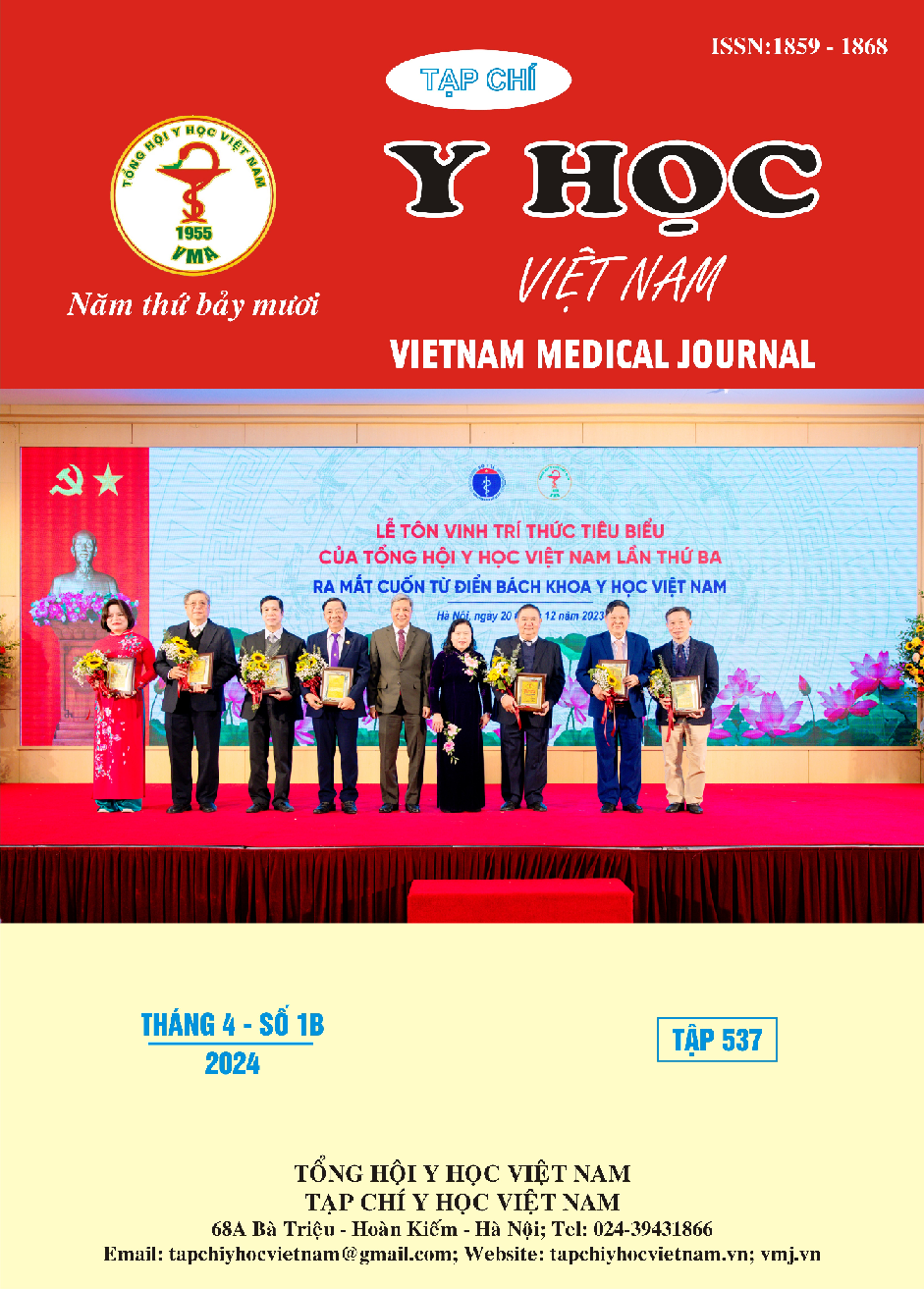STUDY ON ANTI-α-GLUCOSIDASE OF CURCUMIN ISOLATED FROM CURCUMA LONGA RHIZOMES
Main Article Content
Abstract
The rhizome or yellow Turmeric root in Traditional Medicine is called Khuong Hoang. This medicinal herb is widely used in many Asian countries, including Vietnam, as a spice and medicine. The main active ingredients in Turmeric are diarylheptanoids, including curcumin. This study investigated the in vitro α-glucosidase inhibitory effect of curcumin. The results showed that curcumin has the ability to strongly inhibit α-glucosidase with IC50 7.73±0.62 µg/ml.
Article Details
References
1. Sultana, S., et al., Molecular targets for the management of cancer using Curcuma longa Linn. phytoconstituents: A Review. Biomedicine & Pharmacotherapy (2021), 135: p. 111078.
2. Feng, L.-P., et al., Two pairs of bisabolane sesquiterpenoid stereoisomers, bisacurone D-G, from the rhizome of Curcuma longa L. Fitoterapia (2020), 146: p. 104701.
3. Feng, Q., Chemical constituents of Curcuma longa I:bisabolane sesquiterpenes. Chinese Journal of Medicinal Chemistry (2007).
4. Tapsell, L.C., et al., Health benefits of herbs and spices: the past, the present, the future. Med J Aust (2006), 185(S4): p. S1-S24.
5. Hewlings, S.J. and D.S. Kalman, Curcumin: A Review of Its Effects on Human Health. Foods (2017), 6(10).
6. Khatun, M., et al., Assessment of the anti-oxidant, anti-inflammatory and anti-bacterial activities of different types of turmeric (Curcuma longa) powder in Bangladesh. Journal of Agriculture and Food Research (2021), 6: p. 100201.
7. Panda, V., et al., An Ayurvedic formulation of Emblica officinalis and Curcuma longa alleviates insulin resistance in diabetic rats: Involvement of curcuminoids and polyphenolics. Journal of Ayurveda and Integrative Medicine (2021), 12(3): p. 506-513.
8. Hakamata, W., et al., Design and screening strategies for alpha-glucosidase inhibitors based on enzymological information. Curr Top Med Chem (2009), 9(1): p. 3-12.
9. Lekshmi, P.C., et al., In vitro antidiabetic and inhibitory potential of turmeric (Curcuma longa L) rhizome against cellular and LDL oxidation and angiotensin converting enzyme. J Food Sci Technol (2014), 51(12): p. 3910-7.
10. Awin, T., et al., Identification of α-glucosidase inhibitory compounds from Curcuma mangga fractions. International Journal of Food Properties (2020), 23(1): p. 154-166.
2. Feng, L.-P., et al., Two pairs of bisabolane sesquiterpenoid stereoisomers, bisacurone D-G, from the rhizome of Curcuma longa L. Fitoterapia (2020), 146: p. 104701.
3. Feng, Q., Chemical constituents of Curcuma longa I:bisabolane sesquiterpenes. Chinese Journal of Medicinal Chemistry (2007).
4. Tapsell, L.C., et al., Health benefits of herbs and spices: the past, the present, the future. Med J Aust (2006), 185(S4): p. S1-S24.
5. Hewlings, S.J. and D.S. Kalman, Curcumin: A Review of Its Effects on Human Health. Foods (2017), 6(10).
6. Khatun, M., et al., Assessment of the anti-oxidant, anti-inflammatory and anti-bacterial activities of different types of turmeric (Curcuma longa) powder in Bangladesh. Journal of Agriculture and Food Research (2021), 6: p. 100201.
7. Panda, V., et al., An Ayurvedic formulation of Emblica officinalis and Curcuma longa alleviates insulin resistance in diabetic rats: Involvement of curcuminoids and polyphenolics. Journal of Ayurveda and Integrative Medicine (2021), 12(3): p. 506-513.
8. Hakamata, W., et al., Design and screening strategies for alpha-glucosidase inhibitors based on enzymological information. Curr Top Med Chem (2009), 9(1): p. 3-12.
9. Lekshmi, P.C., et al., In vitro antidiabetic and inhibitory potential of turmeric (Curcuma longa L) rhizome against cellular and LDL oxidation and angiotensin converting enzyme. J Food Sci Technol (2014), 51(12): p. 3910-7.
10. Awin, T., et al., Identification of α-glucosidase inhibitory compounds from Curcuma mangga fractions. International Journal of Food Properties (2020), 23(1): p. 154-166.


